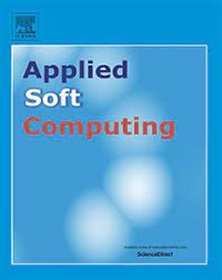Unveiling authenticity with diffusion-based face retouching reversal
IF 7.2
1区 计算机科学
Q1 COMPUTER SCIENCE, ARTIFICIAL INTELLIGENCE
引用次数: 0
Abstract
Unveiling the real appearance of retouched faces to prevent malicious users from deceptive advertising and economic fraud has been an increasing concern in the era of digital economics. This article makes the first attempt to investigate the face retouching reversal (FRR) problem. We first build an FRR dataset, named deepFRR, by collecting 50,000 StyleGAN-generated high-resolution (1024 × 1024) facial images and retouching them via a commercial online API. Then, we present a novel diffusion-based FRR network (FRRffusion) for the FRR task. Our FRRffusion consists of a coarse-to-fine two-stage architecture: A diffusion-based Facial Morpho-Architectonic Restorer (FMAR) is constructed to generate the basic contours of low-resolution faces in the first stage, while a Transformer-based Hyperrealistic Facial Detail Generator (HFDG) is designed to create high-resolution facial details in the second stage. Tested on deepFRR, our FRRffusion surpasses the state-of-the-art image restoration method with 22%, 11%, 20%, and 6% performance improvement in SSIM, PSNR, VGGS, and CLIPS, respectively. Especially, the de-retouched images by our FRRffusion are visually much closer to the raw face images than both the retouched face images and those restored by the state-of-the-art, like GP-UNIT and Stable Diffusion, in terms of qualitative evaluation with 85 subjects. These results sufficiently validate the efficacy of our FRRffusion, bridging the gap between the FRR and generic image restoration tasks. The code is available at https://github.com/GZHU-DVL/FRRffusion.

求助全文
约1分钟内获得全文
求助全文
来源期刊

Applied Soft Computing
工程技术-计算机:跨学科应用
CiteScore
15.80
自引率
6.90%
发文量
874
审稿时长
10.9 months
期刊介绍:
Applied Soft Computing is an international journal promoting an integrated view of soft computing to solve real life problems.The focus is to publish the highest quality research in application and convergence of the areas of Fuzzy Logic, Neural Networks, Evolutionary Computing, Rough Sets and other similar techniques to address real world complexities.
Applied Soft Computing is a rolling publication: articles are published as soon as the editor-in-chief has accepted them. Therefore, the web site will continuously be updated with new articles and the publication time will be short.
 求助内容:
求助内容: 应助结果提醒方式:
应助结果提醒方式:


